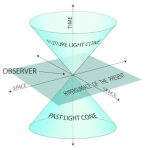As more and more things that use radio are invented, it is inevitable that the limited spectrum will be squeezed. We see this with BPL, which admittedly causes interference on the HF spectrum, however, proponents have deep pockets. Then there are the so-called “whitespaces” between active TV channels coveted by broadband providers. Not even the once-sacred GPS system is immune to interference by other radio systems being implemented by companies who “bought” the radio spectrum in question. Although it is quite beyond me exactly how one can buy or sell radio spectrum. I suppose next they will be selling sunlight and rain.
The next chunk of the RF spectrum being repurposed is in the 451-457 MHz range. This has already been eyed by the Department of Homeland Security for on-scene data communications networking. However, the latest interested party is the Alfred Mann Foundation, which builds bonic implants. In an interesting twist, one of the plans for the spectrum in question is something called the MMNS (medical micropower network systems). This network would be used to transmit commands from the patient’s spinal cord to prosthetic devices.
Many TV stations use 450-455 MHz band for IFB and cueing. Radio stations use that same spectrum for remote broadcast and telemetry return links from transmitter sites. RPU frequencies used to be very congested, as remote broadcasts were often an additional revenue stream for radio stations. These days, most stations to “cellphone” remotes, e.g. the disk jockey goes out to a store or event and calls it in on his or her cellphone. Some of the more fancy stations use POTS codecs like the Comrex blue box or matrix and very few still use ISDN. So the first question is how many broadcasters still use UHF (or even VHF) RPU gear (AKA The Marti)?
The second question is what type of damage or reaction could occur if a UHF RPU interfered with one of these MMNS devices? Some RPUs use fairly high power levels and directional antennas. But, according to FCC Report and Order on ET Docket 09-36, it is a done deal:
The rules we adopt will allow these new types of MedRadio devices to access 24 megahertz of spectrum in the
413-419 MHz, 426-432 MHz, 438-444 MHz, and 451-457 MHz bands on a secondary basis.
It goes on to say:
Each year, millions of Americans, including injured U.S. soldiers, suffer from spinal cord injuries, traumatic brain injuries, strokes, and various neuromusculoskeletal disorders. The devices that we anticipate will operate under our new rules are designed to provide artificial nervous system functions for these patients.
Which is nice. I suppose if someone is at the mall setting up the Marti for a remote and when it gets turned on, Grandpa starts break dancing, one should find another frequency. Do you think the DJs or promotions people remember that? No, me neither.
If this keeps up, eventually everything is going to interfere with everything else and nothing will work.






What about the 70cm amateur band?
@Tom, I think the ARRL has voiced some concern about the 70cm band as well.
“eventually everything is going to interfere with everything else and nothing will work.”
QFT.
Wow, there goes my 443.45 repeater, and most of the 440 ham repeaters on 441-444MHz.
Not to mention the hundreds of public safety licensees in the 452 and 453MHz local government channels. Just got done doing a narrowbanding license for two counties in GA who just spent over 100 grand of money they didn’t have replacing their otherwise functional 453MHz analog radio system with new narrowband capable digital repeaters and subscriber radios. Nice to know they’re gonna have to move again.
The FCC is a broken agency. It’s beyond an enema cleansing. It needs to be taken out like the cancer ridden organ it is.
I thought RPUs were obsolete…until I tried to buy one. The station I’m doing work for still broadcasts high school games. For local games we use a VHF Marti, but it’s a 60s vintage tube rig, seriously out of tune and I can’t find a manual for it. I’m using a ham HT with a wideband FM demod but would love to get another Marti.
The problem is they are few and sell so quickly that I can’t get a bead on one before it’s too late. the search goes on…
The thing I can’t understand is why can’t they use an existing short-range communications technology with its own allocated spectrum already in place, say Bluetooth, for something like MMNS? Heck, there could be a separate MMNS/MedRadio profile developed for BT (like all the profiles that BT already has for different devices) using medical-approved BT hardware. I’d imagine there would have to be some FDA approval for something like BT to be used for medical purposes like MMNS?
And as far as the DHS needing 451-457 MHz, can’t they instead use the 400-420 MHz band already allocated for government use? Or better yet, can’t they convince the Department of Defense to let them use spare bandwidth on their military sats (FLTSATCOM, et al) for the same thing? I’d guess not on the latter, considering the DoD’s stubborn and obstinate reputation for not wanting to share their unclassified tech with other fed agencies, in the paranoiac reasoning of “national security”. That’s what prompted the FAA to develop WAAS, after the DoD said no to them asking to use P(Y)-channel GPS for accurate civil aircraft navigation.
My concern is this! Our stations still have active Marti frequencies for a reason. Granted the “new fangeldy high tech” codecs work most of the time…what happens when your local area (you know, the area you’re licensed to serve the public) has a major event where cell service and/or internet service is down. Don’t laugh…it will happen sooner or later somewhere (Hurricane Katrina and Sandy come to mind). Provided my stations still have power (and we have full gensets on studios plus transmitter sites), and my tower is still standing, I can go anywhere within my service area and stick a magnetic mount rpu antenna on the roof and away we go.
Food for thought…it’s not going to matter about all of the “homeland security” if your town is crippled because of a cell/internet outage…and it will happen! No such animal as an HD portable battery operated tv, and RADIO is still viable for exactly this purpose! Hell even most tv stations are using the internet/cell as an ENG transmitter. Sigh…preaching to the choir i guess!
the F.C.C. is on it’s way out and this is a good thing